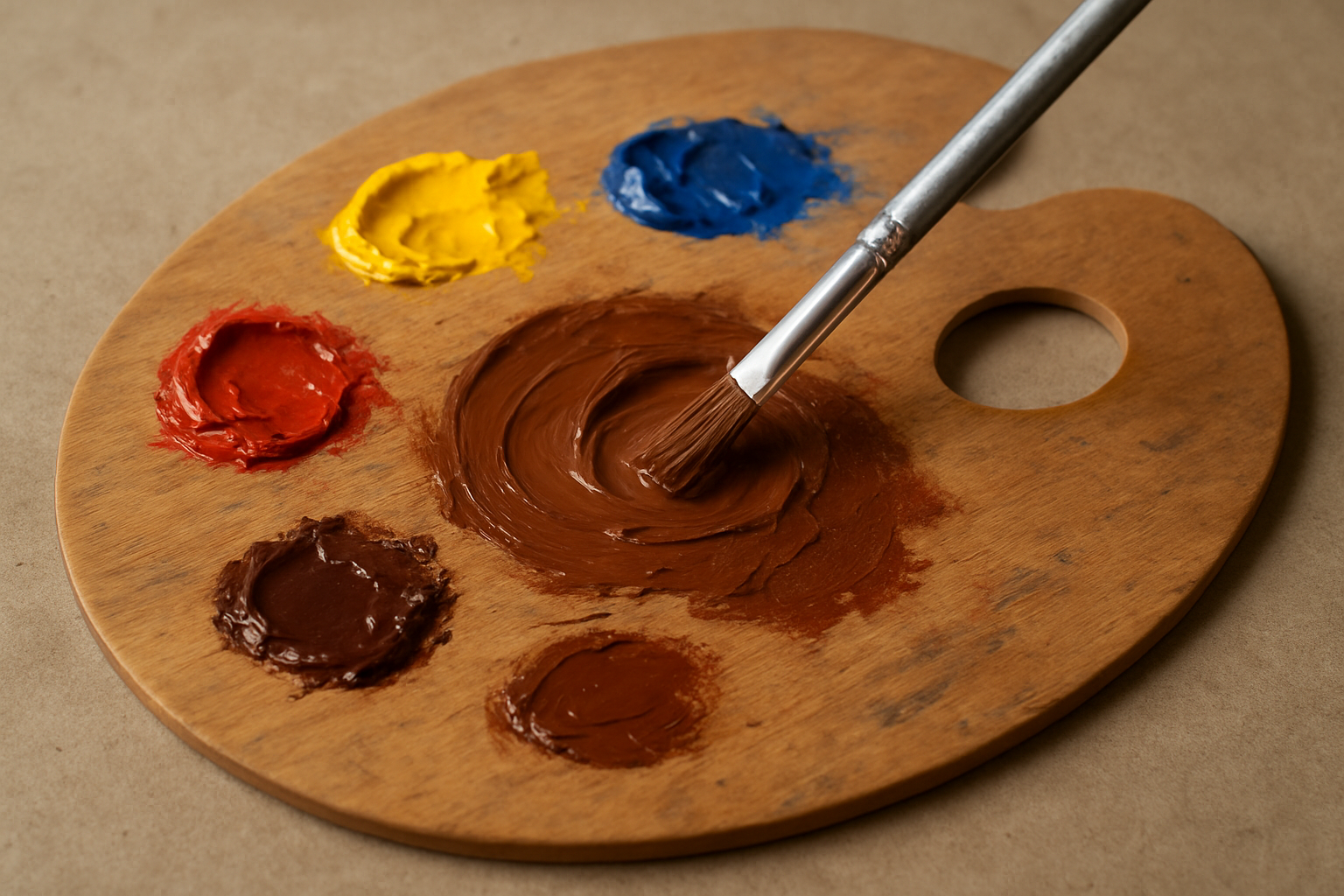When it comes to art, design, and DIY projects, few colors are as versatile as brown. Whether you are painting, mixing makeup shades, or working with digital design tools, knowing how to make brown can help you achieve the right depth, warmth, and richness in your work. While brown may seem simple, it’s actually a combination of multiple colors and can be adjusted to create countless shades.
In this guide, we’ll walk through the basics of color theory, explain the different ways to create brown, and share practical tips for adjusting tones to suit your project.
Understanding Brown in Color Theory
Brown is not a primary or secondary color on the color wheel—it’s a tertiary color created by mixing other shades. At its core, brown is produced by blending complementary colors (opposites on the color wheel) or by combining the three primary colors: red, blue, and yellow.
Think of brown as a “neutralizer” in art. It adds realism and natural tones, making it an essential shade for painting skin, wood, landscapes, and shadows.
The Basic Formula: Primary Colors
One of the simplest ways to make brown is by mixing equal parts of the primary colors:
- Red brings warmth.
- Blue adds depth and coolness.
- Yellow lightens the mixture and balances intensity.
When blended together, these three colors naturally create a brown tone. Adjusting the proportions will change the outcome—for example, more red makes a warmer, earthy brown, while more blue produces a cooler, darker shade.
Mixing Complementary Colors
Another effective method to create brown is to mix complementary colors, such as:
- Red + Green
- Blue + Orange
- Yellow + Purple
These pairs are opposite each other on the color wheel, and when mixed, they neutralize each other into a brown or muted tone. This technique is especially useful in painting when you want to quickly neutralize a strong color.
How to Adjust the Shade of Brown?
Not all browns are the same. Depending on your project, you may want a lighter, darker, warmer, or cooler variation. Here are a few tips:
- To lighten brown: Add white or a little yellow. This creates tan or beige-like shades.
- To darken brown: Add black, but use sparingly, as it can quickly overpower. Alternatively, add more blue for a natural dark brown.
- To warm up brown: Add more red or orange. This results in rich, earthy tones often used in autumn palettes.
- To cool down brown: Add more blue or green for a more subdued, natural look.
Everyday Applications of Brown
Brown isn’t just for art—it’s everywhere in design, fashion, and even food presentation. Here are a few practical uses:
- Interior design: Different shades of brown create warmth and comfort in living spaces.
- Fashion: Brown tones are timeless and versatile, pairing well with neutrals and bold colors alike.
- Makeup: Eye shadows, contour shades, and eyebrow products often rely on subtle variations of brown.
- Digital design: Graphic designers mix brown digitally to create earthy palettes and natural aesthetics.
No matter your field, understanding how to Make Brown Color gives you creative freedom to achieve the exact tone you want.
Common Mistakes to Avoid
When learning to make brown, beginners often run into a few challenges:
- Overmixing – Too many colors at once can make brown muddy and dull. Start with two or three shades and adjust gradually.
- Using too much black – While black can darken, it may also flatten the color, making it less vibrant.
- Ignoring color undertones – Browns can lean warm, cool, or neutral depending on the dominant color. Always test before applying broadly.
Final Thoughts
Brown may seem like an ordinary color, but mastering it opens endless possibilities for creative work. Whether you’re painting a portrait, designing a room, or crafting a digital project, knowing how to make brown ensures you can achieve the right mood and balance in your design.
Next time you’re mixing paints or selecting digital shades, experiment with different combinations of red, yellow, and blue—or try complementary colors for a quick solution. With practice, you’ll be able to create everything from soft beige tones to rich chocolate browns.
For a more in-depth guide on practical techniques, check out this helpful resource on how to Make Brown Color.
